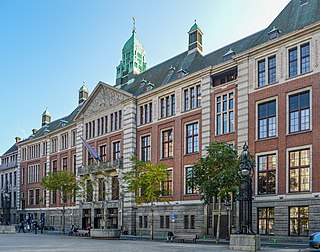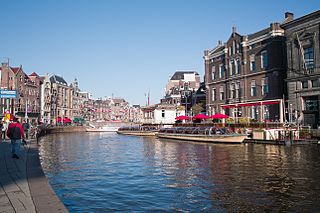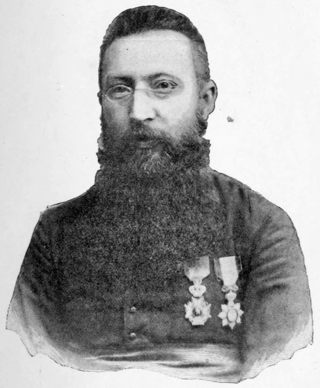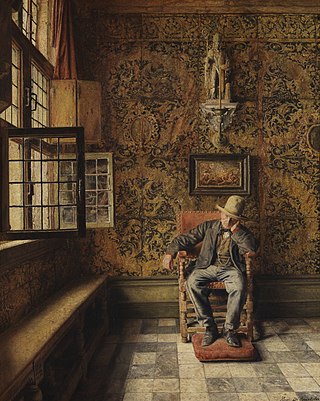
Euronext N.V. is a pan-European bourse that provides trading and post-trade services for a range of financial instruments.

The London International Financial Futures and Options Exchange was a futures exchange based in London. In 2014, following a series of takeovers, LIFFE became part of Intercontinental Exchange, and was renamed ICE Futures Europe.

Euronext Amsterdam is a stock exchange based in Amsterdam, the Netherlands. Formerly known as the Amsterdam Stock Exchange, it merged on 22 September 2000 with the Brussels Stock Exchange and the Paris Stock Exchange to form Euronext. The registered office of Euronext, itself incorporated in the Netherlands a public limited company, is also located in the exchange.

Borsa Italiana, based in Milan at Palazzo Mezzanotte, is the Italian stock exchange. It manages and organises domestic market, regulating procedures for admission and listing of companies and intermediaries and supervising disclosures for listed companies.
François Louis Ganshof was a Belgian medievalist. After studies at the Athénée Royal, he attended the University of Ghent, where he came under the influence of Henri Pirenne. After studies with Ferdinand Lot, he practiced law for a period, before returning to the University of Ghent. Here he succeeded Pirenne in 1930 as professor of medieval history, after Pirenne left the university as a result of the enforcement of Dutch as language of instruction. He remained there until his retirement in 1961.

The Brussels Stock Exchange, abbreviated to BSE, was founded in Brussels, Belgium, by decree of Napoleon in 1801. In 2002, the BSE merged with the Amsterdam, Lisbon and Paris stock exchanges into Euronext, renaming the BSE Euronext Brussels. The most well known stock market index on the BSE is the BEL20.

Euronext Paris, formerly known as the Paris Bourse, is a securities market which merged with the Amsterdam, Lisbon and Brussels exchanges in September 2000 to form Euronext NV. As of 2022, the 795 companies listed had a combined market capitalization of over US$4.58 trillion. Euronext Paris, the French branch of Euronext which was formerly seated at the Palais Brongniart in Paris, is Europe's second largest stock exchange market as of 2023, behind the London Stock Exchange (LSE).

The Palais Brongniart is a building in Paris that was built at the direction of Napoleon in the early 19th century to house the Paris stock exchange. It is located at the Place de la Bourse, in the 2nd arrondissement in central Paris. It was named after its initial architect, Alexandre-Théodore Brongniart, who died in 1813 prior to its completion. The Palais Brongniart is nowadays used as an events centre, since the trading floor relocated in 1987, followed in 2004 by the last financial institution that was still housed there.

The Rokin is a canal and major street in the centre of Amsterdam. The street runs from Muntplein square to Dam square. The Rokin canal used to run from Muntplein square to Dam Square, but in 1936, the part between Spui square and Dam Square was filled in. Canal boats are now moored on the remaining part of the water, from the Amstel to Grimburgwal.
The Gazet van Antwerpen is a Belgian newspaper in Antwerp and Flanders, published by Concentra.

The Boerentoren is a historic high-rise building in Antwerp, Belgium. Constructed between 1929 and 1932 and originally 87.5 m (287 ft) high, it remained the tallest building and the second-tallest structure in the city until 2019, when the Antwerp Tower surpassed it with a height of 100.7 m (330 ft). At the time of construction, it was the second tallest building in Europe by roof height.
An exchange, bourse, trading exchange or trading venue is an organized market where (especially) tradable securities, commodities, foreign exchange, futures, and options contracts are bought and sold.
LCH is a British clearing house group that serves major international exchanges, as well as a range of OTC markets. The LCH Group consists of two subsidiaries: LCH Ltd based in London and LCH SA based in Paris.

Antwerp is a city and a municipality in the Flemish Region of Belgium. It is the capital and largest city of Antwerp Province, and the third largest city in Belgium by area at 204.51 km2 (78.96 sq mi) after Tournai and Couvin. With a population of 536,079, it is the most populous municipality in Belgium, and with a metropolitan population of over 1,200,000 people, the country's second-largest metropolitan region after Brussels.

The Korenbeurs was a 17th-century commodity market in Amsterdam where grain was traded. The building stood on the banks of the Amstel, on the western side (Nieuwezijde) of the Damrak. It was directly south of the Oude Brug bridge, on a spot now occupied by the former stock and commodity exchange Beurs van Berlage.

Constant Pierre-Joseph De Deken was a Belgian colonial explorer, anthropologist and Roman Catholic missionary.
The following is a timeline of the history of the municipality of Antwerp, Belgium.

Jean Butez is a French professional footballer who plays for Belgian club Antwerp as a goalkeeper. A prospect of the Lille academy, Butez made his breakthrough with Mouscron and signed with Antwerp in 2020.

The Man in the Chair is an oil on canvas painting by Belgian painter Henri de Braekeleer. The painting is currently housed at the Royal Museum of Fine Arts in Antwerp.

The bourse at Bruges is the first bourse in the world, established in Bruges the 13th-century.




















